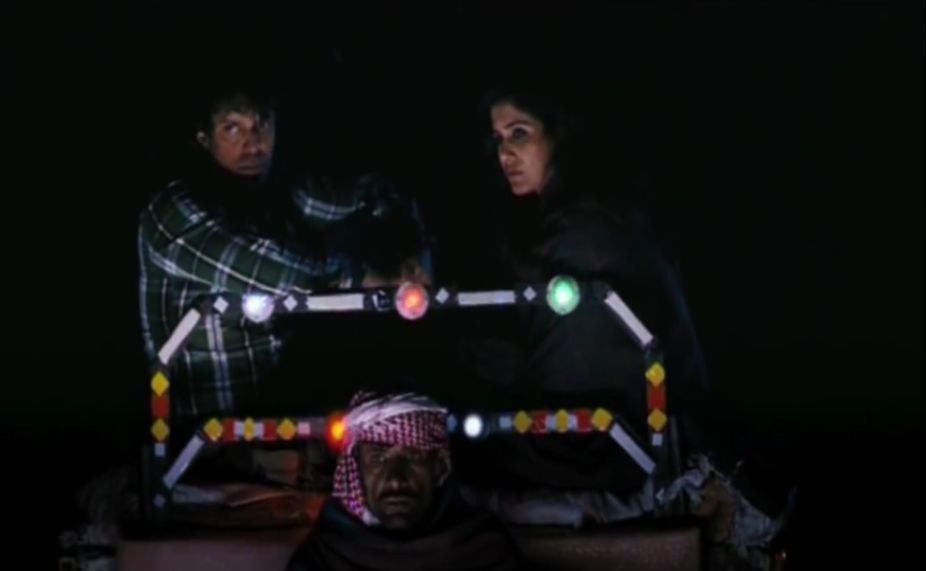Four years ago, there was a heated debate over an obscure Gujarati film, The Good Road, scoring over The Lunchbox in the race to the Oscars. It meant that there was an independent movement in Indian cinema with a definite place outside the mainstream.
It was not just that National Film Development Corporation — with the standards it had set since the days of the New Indian Cinema in the 1970s and 80s — had produced The Good Road, which reflected the strength of the regional cinema that could run parallel to the several-hundred crore market that Bollywood exploits. Makers of these films, many of them first-timers, could extend their ambitions to Cannes where the festival provided a platform for acritical as much as a commercial response. This is why films like Masaan, Titli, Ship of Theseus, Gangs of Waseypur and Margarita With A Straw shot into prominence. They may not have turned out to be blockbusters but, taken together, they indicated that a new generation had emerged with a confidence about the social content it was exploring along with styles that were excitingly varied.
After India’s performance at the just concluded Cannes film festival, the question that could be quite disturbing is whether the independent movement has lost its early sparks. The youthful energy that was evident till a few years ago with the presence of Dibakar Banerjee, Anurag Kshyap and Neeraj Ghaywanwas conspicuous by its absence this year. What came instead was an explosion of fashion statements by stars who were promoting consumer items more than films in any of the sections. Aishwarya Rai Bachchan, Deepika Padukone, Mallika Sherawat and Sonam Kapoor had agendas of their own which were not matched by the performance of filmmakers who could represent the burst of creative talent. It was somewhat disappointing to note that, with his global achievements, AR Rahman should be noticed as someone merely walking the red carpet with the cast and crew of an ambitious trilingual project, Sangamithra, which is said to be capable of challenging the success of Baahubali. With a history that dates back to Pather Panchali, India’s presence at Cannes deserves to go beyond glamorous thrills.
It is not that there is any dearth of enthusiasm in being part of the carnival at the French Riviera.The excuse for the large Indian delegation that lands at the festival every year is that there are exciting ideas that may be picked up for the next Indian festival in Goa. But the glaring absence of Indian films in the official sections cannot compensate for the vigorous promotion of Nandita Das’sfilm on the Urdu writer Saadat Hasan Manto, the Sikkimese film Pahuna produced by Priyanka Chopra or Sangamithra, which is still in the preshooting stage but whose producers hosted a lavish party at the film market.
The Indian pavilion, managed by the National Film Development Corporation, may have offered the platform for promotional work that took Aparna Sen to Cannes with her film Sonata, though it had a uninspiring run back home, and saw events like the trailer launch of The Black Prince, the story of Punjab’s last king, Duleep Singh and his relationship with Queen Victoria. That could not conceal the disappointment of Indian entries like Anup Singh’s The Song of Scorpions (with Irfan Khan, Waheeda Rehman and an Iranian actor) and Ashim Ahluwalia’s Daddy failing to make it to the competition. It has been 23 years since Shajun Karun’s Swaham was in the competition when Quentin Tarantino picked up the Palme d’Or for Pulp Fiction.
Whether anyone from the ministry that had a sizable contingent at the festival will be able to bringthis year’s winner, the Swedish film, The Square, to Goa is anyone’s guess. But there was reason to be pleased that a third year student of the Film and Television Institute in Pune, Payal Kapadia, found a place in the section on film school projects with a 13-minute short, Afternoon Clouds. This isparticularly satisfying because the section must have drawn hundreds of entries and confirms the talent that is emerging.
Similarly, a first-timer from Assam, Rima Das, was able to take her film, Village Rockstars to the festival as a promotional effort. Her first film, Antardrishti, was also seen at Cannes and had revealed the off-beat skills of a promising young director. If there was one other takeaway that was pleasing, it was that the Iranian director, Majid Majidi, launched his new film at Cannes and simultaneously announced that his next film would be shot in India.
The 70th year of the Cannes film festival was a good occasion to look back on the best years of India at the Riviera. Two years ago, Masaan had grabbed a Fipresci award at the Certain Regards section. The awards for Pather Panchali and Salaam Bombay are landmarks that will never be erased. Few recall that Chetan Anand’s Neecha Nagar, made in 1946, had recorded an equally successful presence. Mrinal Sen and Bimal Roy have left their marks with Kharij and Do Bigha Zameen. After all this, it is difficult to believe that, while Venice and Toronto can look at India for cinematic excellence, Cannes is more interested in glossy contributions. Will the parameters change?











